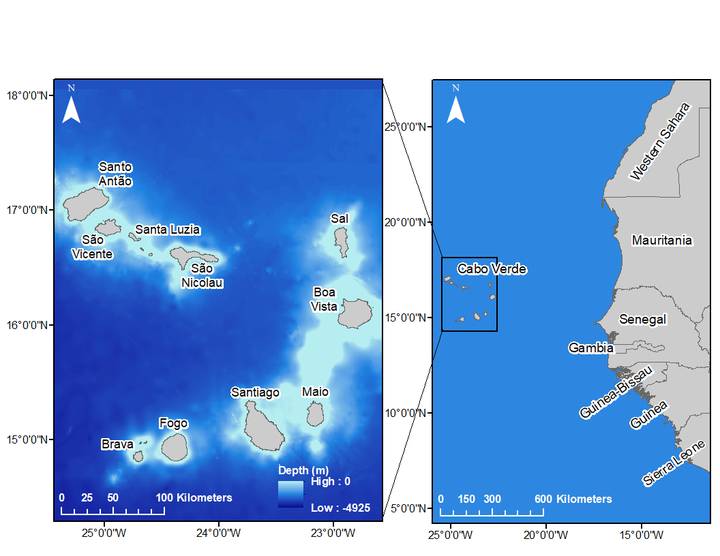Productive foraging grounds enhance maternal condition and offspring quality in a capital breeding species

Abstract
Feeding ecology is an essential component of an organism’s life, but foraging comes with risks and energetic costs. Species in which populations exhibit more than one feeding strategy, such as sea turtles, are good systems for investigating how feeding ecology impacts life-history traits, reproduction and carried over effects across generations. Here, we investigated how the feeding ecology of loggerhead sea turtles (Caretta caretta) nesting at the Cabo Verde archipelago correlates with reproductive outputs and offspring quality. We determined the feeding ecology of female turtles before and during the breeding season from stable isotope analysis of carbon and nitrogen and correlated isotopic ratio with female and offspring traits. We found that female turtles feeding at higher trophic positions produced larger clutches. We also found that females with higher δ13C values, typical of productive foraging areas, had greater fat reserves, were less likely to be infected by leech parasites and produced heavier offspring. The offspring of infected mothers with higher δ13C values performed best in crawling and self-righting trials than those of non-infected mothers with higher δ13C values. This study shows adult female loggerheads that exploit productive areas build capital reserves that impact their reproductive success and multiple proxies for offspring quality. Overall, our findings provide valuable insights into the complex interplay between feeding ecology and reproductive success, and reveal the transgenerational carry-over effects of both feeding ecology and health on offspring quality in sea turtles.